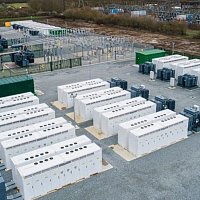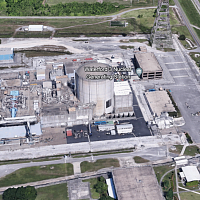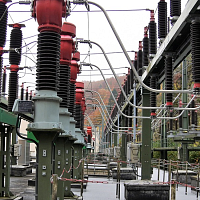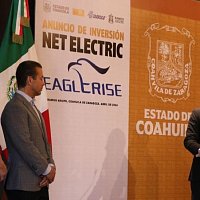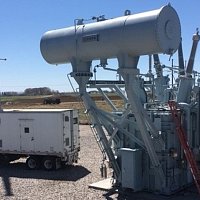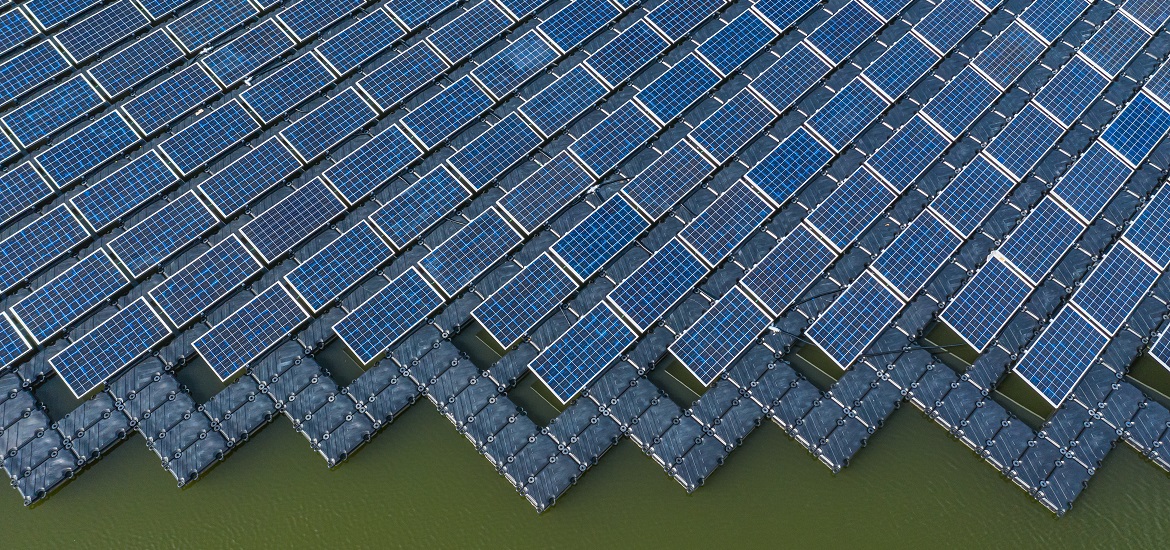
CASE STUDY
Foreword from the Editor in Chief:
It amazes me to see how rapidly things can change in the power industry. Take for example the term “Floatovoltaics”. It sounds like something out of a Star Trek movie. “Mr. Spock, prepare the floatovoltaics for landing on the surface of the planet.” But as the word suggests, it is a series of floating solar panels used for making solar farms less land intensive. And given the vastness of the oceans, lakes or seas, that might overcome the objection “Not in my backyard, please.” As this amazing article details, the world is changing to newer and greater demands for alternative, non-fossil fuel generation.
As the world continues its quest to source more renewable energy, the latest frontier is adding solar fields above water. Installing solar fields on water provides new surface areas for power generation once only reserved for land use.
However, as the industry considers the added environmental risks and implications of integrating liquid immersed transformers into these installations, more-and-more are turning to natural ester units that not only mitigate the impacts in case of a spill in water contamination, but also deliver superior load capacity, longevity and lower costs.
Such floating solar projects are mostly taking advantage of water surface in areas which were not explored otherwise. The performance of the photovoltaic panels is favored by the cooling provided by the water and impacts on the environment are kept as low as possible. Floatovoltaics cost less to install than traditional land-based solar panels because there is no need to clear the land or treat the soil.
The solution avoids land expropriation, does not interfere with the existing ecosystem as much, especially when using lakes formed by the hydropower dams, and allows for using the same substations and transmission lines from the existing powerplant. As previously mentioned, covering the surface of one hydropower dam lake would lead to peak generation that is 1.6 times higher than the power generated by the turbines of the power plant – so, at a fraction of the cost of the investment for a hydropower plant, its peak capacity could be more than doubled.
In fact, among the more than 60 countries pursuing the installation of Floatovoltaics, 35 are home to an estimated 350 operational systems, which up until the end of August 2020 had a cumulative capacity of approximately 2.6 GW. Although still considered a niche, floating photovoltaic (FPV) is projected to grow at a rate of more than 20% in the next five years. And the use of natural ester in transformers has the tendency to become a new standard solution for these applications.
Derived from 100 percent renewable plant sources, Cargill produces its FR3 dielectric fluid, which has already been used by several utilities and industrial customers as the dielectric fluid for their transformers for over 20 years.
Floating photovoltaic is projected to grow at a rate of more than 20% in the next five years, and the use of natural ester in transformers has the tendency to become a new standard solution for these applications.
The fluid has also been seeing significant growth as the industry brings more floating solar projects online. In 2020 alone, the global agricultural and bio-industrial firm has been involved in the first floating solar fields in Brazil, China and India.
In all these projects it was decided to use step-up transformers filled with Cargill’s natural ester. This option also suits the utilities that seek to minimize the risks and maximize the profits. As in any process from a traditional solution that has been in use for over a hundred years to a new technology, the transition is being performed very carefully, as it should be. Transformers have a useful life expectation in the range of three decades or more, and the overall replacement ratio is estimated to be around 1% - 2% a year. So, gradually but continuously, the electrical system is being converted, one transformer at a time.
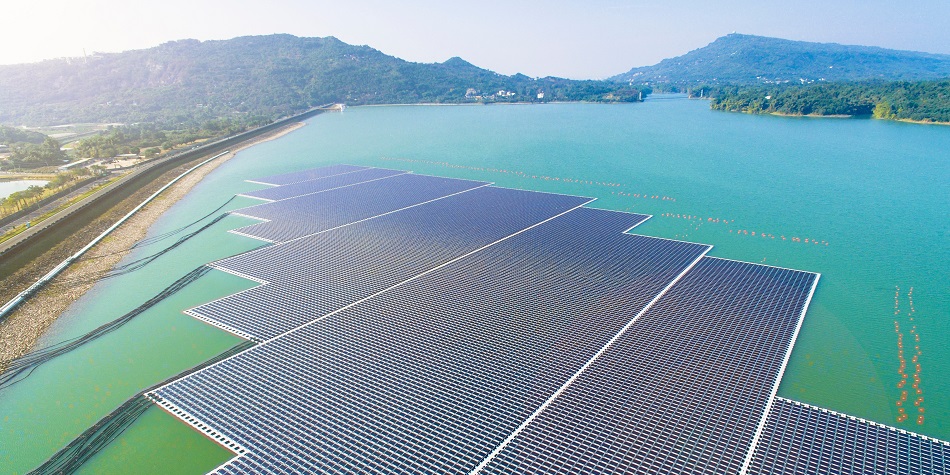
Making Waves in China
The CGN’s floating solar project in Hunan Province is 100 MW. Considering 1,500 h/year of the equivalent full-loading cycles, the plant produces 100 MW x 1500 h = 150,000 MWh of electricity per year, or around 411 MWh per day. The investment in solar projects in China is about 4.5 CNY/W, or 661 USD/kW. Depending on the project type, some of the projects are backed by government allowance of approximately 0.18C NY/kWh of electricity produced. However, as the solar industry in China develops and the market plays a bigger part, most projects do not have that allowance and investors are paying more and more attention to cost.
“The advantages of natural ester are already recognized in China,” said Revin Wang, Cargill Technical Application Manager in China. “Furthermore, we can see important activities related to development of national standards, such as the group of standards for natural ester filled transformers in general requirements, technical parameters, transformer assessment using dissolved gas analysis (DGA), operation and maintenance parameters and economic analysis guides in addition to the very relevant fire protection guide.”
In addition, utilities like State Grid Corporation of China (SGCC) and China Southern Grid (CSG) have published corporate standards requiring their distribution transformer bids to be focused on natural ester filled units. In several provinces SGCC already started pilot bulk tenders for natural ester filled distribution transformers. CSG is also working on a pilot project of a large natural ester filled power transformer at the voltage level of 220 kV and started an R&D project for 550 kV natural ester filled transformers.
These advancements are aligned with the government-led policy of green development that will leverage the adoption rate of natural esters, such as FR3 fluid, to become the main insulating liquid used in new transformers in China.
Since the beginning of its commercial use about 25 year ago, no pool fire has ever been reported in any FR3 filled transformer.
Getting Greener in Brazil
Companhia Hidro Elétrica do São Francisco (CHESF), a big Brazilian state company focused on generation and transmission, installed the first floating solar plant on the reservoir of Sobradinho hydro power plant (UHE Sobradinho) in Brazilm which was inaugurated on August 5th, 2019.
This is a prominent hydro generation plant with a capacity of 1,050 MW and a large lake. The solar floating pilot project had the first stage done at the beginning of 2020, with an initial capacity of 1 MWp, but the total project may reach around 3-3.5 MWp.
It is a small plant, but a pioneer project in Brazil. At the same time, it avoids land consumption and allows for using the same substations and transmission lines from the existing power plant, minimizing the implementation costs and environmental impacts. The transformer – a 4,200 kVA 34.5/2x0,36 kV filled with 2,500 liters of FR3 fluid – was supplied by WEG Brazil.

The floating solar power plant of CHESF is producing 1 MWp and has 3,792 solar panels occupying a total area of 11 km2. This is the first phase of an R&D project that is planned to have a total of 2.5 MWp at a total cost of around $10,000,000.
Utilizing the full potential of Sobradinho's water dam for installing photovoltaic panels would allow for a peak generation 60% higher than the hydroelectric plant itself. Sobradinho dam has a surface area of 4,200 square kilometers, with a hydroelectric plant capable of generating 1,050 MW.
“Several utilities in Brazil are already purchasing new distribution transformers filled with natural ester,” said Darcisio Sardagna, a Cargill commercial manager for the South America region. “The same trend is gradually being started in the large transmission companies, such as CHESF.”
Many of these companies also have hydropower plants, which account for 63.8% of the electrical energy generation in Brazil [1], where the surfaces of the lakes formed by the dams could be explored. This reveals the potential of a major increase in the generation capacity with a minimum impact on the environment.

India Boosts Floating Solar to Meet Demand
Once an FR3 filled transformer is installed at a 100 MWp floating solar project in India, it will supply 50% of the country’s natural ester requirement, with the balance achieved by the end of the year.
The collaboration between National Thermal Power Corporation (NTPC), a Delhi solar farm owner, Bharat Heavy Electricals Limited (BHEL) and Silchar Technologies Vadodara (OEM) is expected to be the largest floating solar installation in India, reaching 100 MWp in total. Once again, they chose FR3 fluid as the only insulating liquid for the transformers.
Several other floating solar projects are currently underway in India as the region acknowledges the advantages of using natural ester as the insulating liquid for all future transformers. Utilities and transformer manufacturers there have already been using FR3 in several projects, including transformers exported from India to other markets. The adoption curve is ramping up as more industry partners measure the results.
The Natural, Sustainable Choice
Beyond Brazil, China and India, countries around the world are realizing that natural ester’s properties make it better for the Earth, compared to mineral oil and synthetic ester dielectric fluids.
Cargill’s FR3 natural ester fluid is produced from 100 percent renewable vegetable sources, which gives utilities the option of using a dielectric fluid that not only dramatically minimizes environmental impact and health risks in case of a spill, but also performs even better than traditional alternatives.
Together with the environmental advantages, a strong motivation for the development of natural ester based insulating fluids was to enhance fire safety. As a “less flammable liquid” it has a very high fire point that effectively mitigates the risk of a pool fire being ignited. Since the beginning of its commercial use about 25 year ago, no pool fire has ever been reported in any FR3 filled transformer.
Natural ester fluid continuously wicks away moisture from the solid insulation, increasing the reliability and resilience of transformers and, thus, of the grid.
Aligning Next-Gen Solutions with Proven Partners
For decades Cargill has been reliably selecting, modifying and reacting various plant-based chemistries to create specific, innovative solutions for our industrial customers, including insulating liquids, road construction products and even the biobased plastics.
As manufacturers across industries look for smarter ways to formulate their products to improve performance and gain total cost efficiencies, Cargill’s broad and diverse portfolio of products and services help create solutions to help customers increase performance and lower costs in a responsible, sustainable manner.
The case of floating solar generation is one more example of successful cases of dielectric fluid application. The dielectric insulating fluids produced and commercialized by Cargill are already in use in over 2.5 million transformers for more than 20 years around the globe. It has a special synergy with renewable energy generation projects since it also uses renewable resources (98% bio-based), is readily biodegradable and proven to be non-toxic in acute water and oral toxicity tests.
Cargill has been actively approached by utilities around the globe to present the advantages of using natural ester in their transformers for years. The application in the transformers used for renewable energy generation is unique for the global business as it actively works with companies developing and operating new generation grid technology.
As a high-performance alternative for the traditional mineral oil used in transformers, natural ester fluid continues to be positioned as the fluid of choice for floating solar projects. Utilities face competing demands to be profitable while providing reliable, safe and consistent power to communities, and using an increasing percentage of renewable energy sources.
References:
1. Government of Brazil, accessed at https://www.gov.br/pt-br/noticias/energia-minerais-e-combustiveis/2020/01/fontes-de-energia-renovaveis-representam-83-da-matriz-eletrica-brasileira






